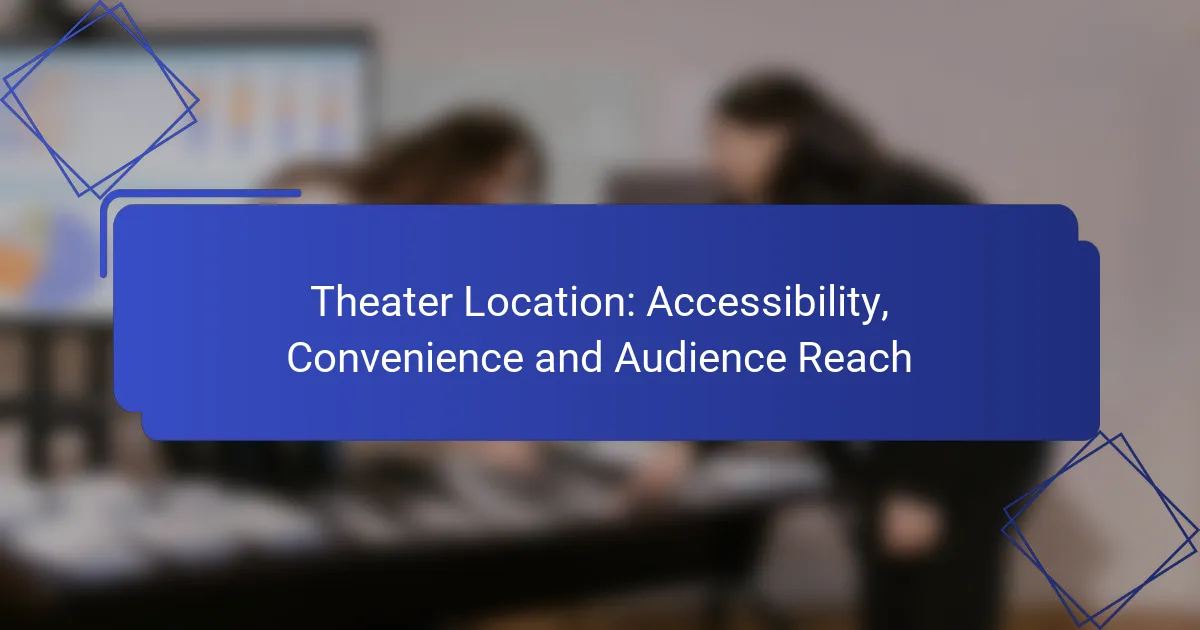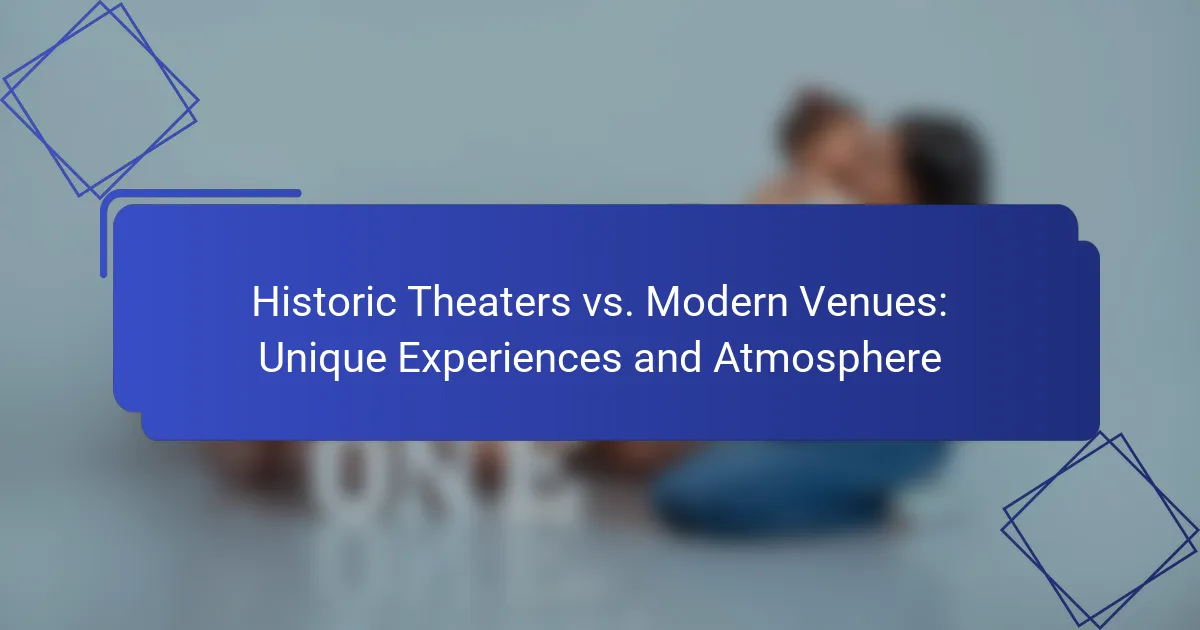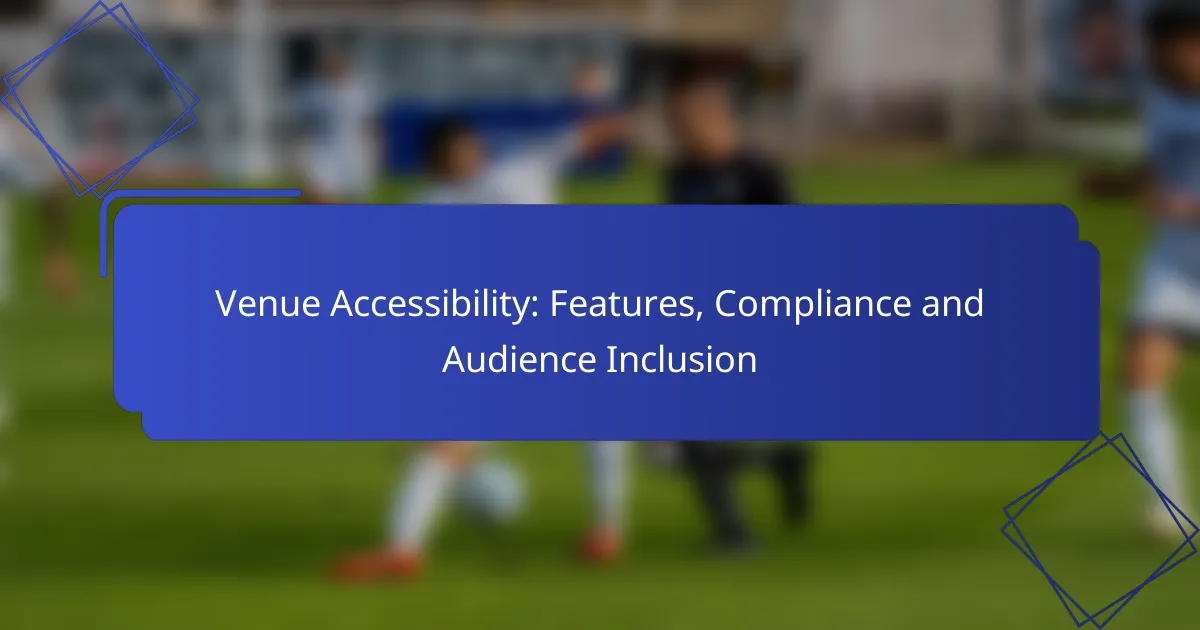Venue size plays a crucial role in shaping audience engagement, comfort, and sightlines during events. Smaller venues tend to create a more intimate atmosphere, enhancing personal connections, while larger spaces can accommodate more attendees but may compromise these interactions. Additionally, factors such as seat dimensions and spacing become increasingly important in larger venues to maintain audience satisfaction and visibility.
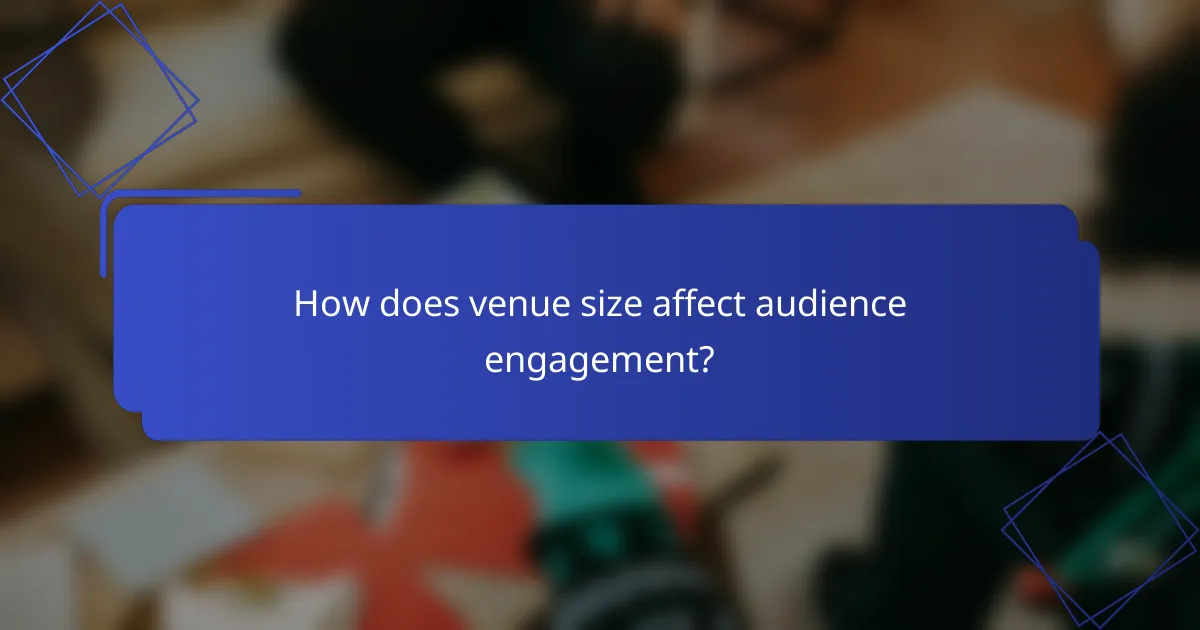
How does venue size affect audience engagement?
Venue size significantly impacts audience engagement by influencing comfort, sightlines, and interaction opportunities. Smaller venues often foster a more intimate atmosphere, while larger spaces can accommodate more attendees but may dilute personal connections.
Optimal seating arrangements
Effective seating arrangements enhance audience engagement by ensuring clear sightlines and comfort. In smaller venues, a more compact layout can create a sense of closeness, while larger venues may benefit from tiered seating to improve visibility. Consideration of sightlines is crucial; seats should be positioned to minimize obstructions and maximize the viewing experience.
For example, in a theater setting, a 60-degree viewing angle is often recommended to maintain audience focus on the stage. In contrast, a concert hall may require different configurations, such as a fan-shaped layout, to accommodate sound distribution and sightlines effectively.
Impact on interaction levels
The size of a venue can significantly influence the level of interaction between the audience and presenters. In smaller venues, attendees are more likely to engage in discussions and ask questions due to the proximity to speakers. Conversely, larger venues may create barriers to interaction, making it harder for audience members to connect with each other and the presenters.
To enhance interaction in larger venues, organizers can incorporate technology, such as live polling or Q&A apps, to facilitate audience participation. This approach can bridge the gap created by physical distance and encourage a more engaging experience.
Case study: Madison Square Garden
Madison Square Garden, one of the largest arenas in the United States, exemplifies the challenges and opportunities of a large venue. With a seating capacity of over 20,000, it offers a diverse range of events, from concerts to sports, but faces challenges in maintaining audience engagement.
To counteract the potential disengagement in such a vast space, Madison Square Garden employs advanced sound and lighting technology, ensuring that every seat offers a quality experience. Additionally, they utilize interactive displays and mobile apps to keep the audience engaged before and during events, demonstrating how large venues can adapt to enhance audience interaction.
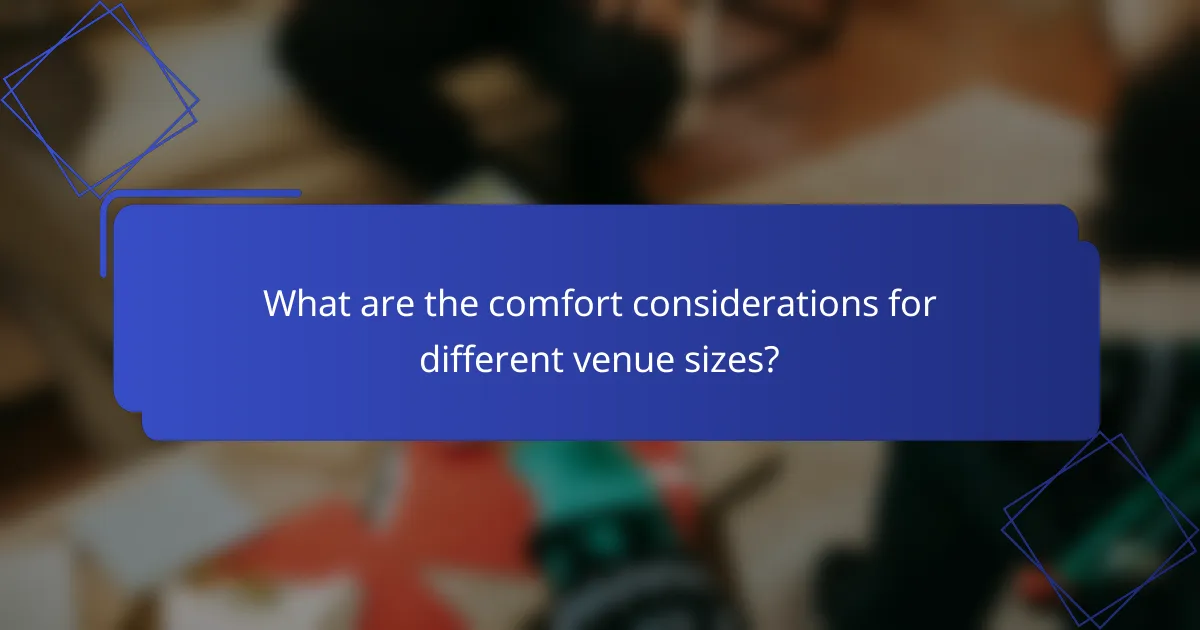
What are the comfort considerations for different venue sizes?
Comfort in various venue sizes hinges on factors like seat dimensions, spacing, and environmental controls. Larger venues may require more attention to these aspects to ensure audience satisfaction and engagement.
Seat dimensions and spacing
Seat dimensions and spacing are crucial for audience comfort, especially in larger venues. Standard seat widths typically range from 18 to 22 inches, while legroom should allow for at least 30 to 34 inches between rows. This spacing helps prevent discomfort during long events.
In smaller venues, tighter seating arrangements can be acceptable, but they may compromise comfort. It’s essential to balance capacity with audience experience, ensuring that even in a packed house, attendees can move easily and feel at ease.
Temperature control and ventilation
Effective temperature control and ventilation are vital for maintaining comfort in any venue size. Larger venues often require advanced HVAC systems to manage airflow and temperature, ensuring that all areas remain comfortable regardless of the number of attendees.
For optimal comfort, venues should aim for a temperature range of 68 to 72 degrees Fahrenheit (20 to 22 degrees Celsius). Regular maintenance of ventilation systems is crucial to avoid stale air and ensure a pleasant environment, particularly during events with high attendance.
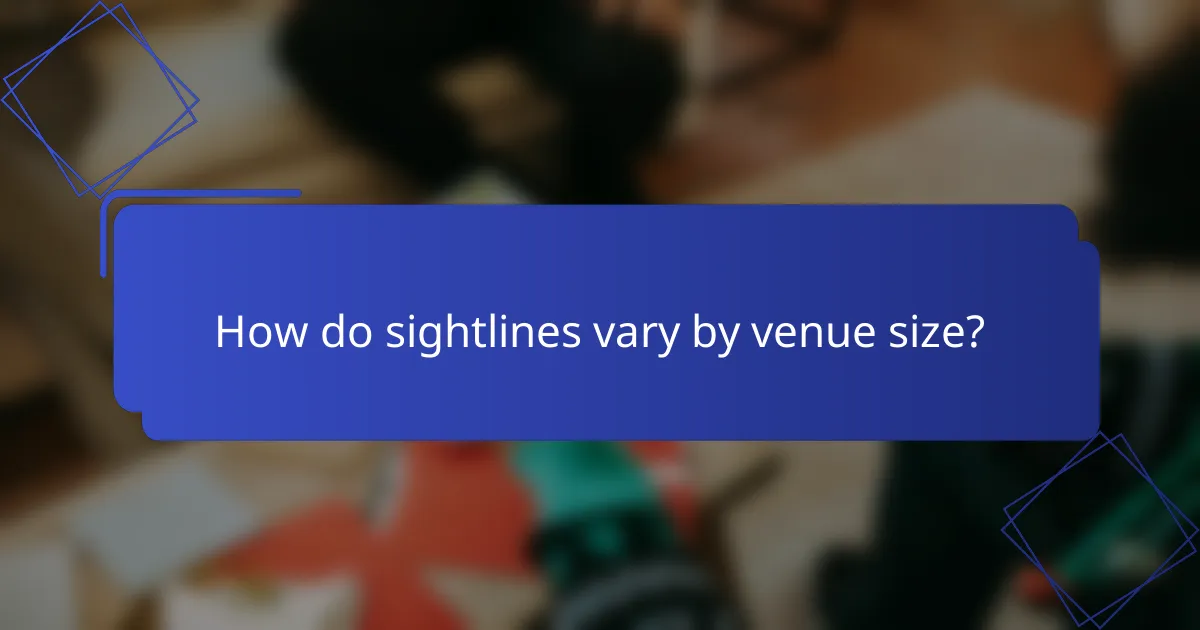
How do sightlines vary by venue size?
Sightlines in venues vary significantly with size, affecting audience engagement and comfort. Larger venues may create challenges in visibility, while smaller spaces often enhance the viewing experience due to proximity to the stage or performance area.
Importance of elevation
Elevation plays a crucial role in ensuring clear sightlines, especially in larger venues. Elevated seating arrangements, such as tiered seating, help minimize obstructions and allow audiences to see over those in front of them. In smaller venues, a flat floor may suffice, but even slight elevation can improve visibility.
When designing or choosing a venue, consider the height of the seating relative to the stage. A general rule is that the first row of seats should be at least 1 meter back for every 0.5 meters of stage height to maintain good sightlines.
Obstructions and their effects
Obstructions can significantly impact sightlines, leading to a poor audience experience. Common obstructions include structural columns, large speakers, or even the heads of other audience members. In larger venues, these elements can create blind spots that hinder visibility.
To mitigate the effects of obstructions, venues should be designed with sightlines in mind, ensuring that all seats have a clear view of the stage. For example, a well-designed venue may limit the number of obstructed seats to less than 10% of total capacity, enhancing overall audience satisfaction.

What criteria should be used to select the right venue size?
Selecting the right venue size involves considering audience engagement, comfort, and sightlines. A venue that is too large may diminish the experience, while one that is too small can lead to overcrowding and discomfort.
Audience demographics
Understanding your audience demographics is crucial when selecting a venue size. Factors such as age, preferences, and cultural background can influence how attendees interact with the space. For instance, a younger audience may prefer a more intimate setting, while a corporate audience might favor a larger venue for networking opportunities.
Consider conducting surveys or analyzing past event attendance to gauge the typical size and preferences of your audience. This data can help you choose a venue that aligns with their expectations and enhances their overall experience.
Type of event
The type of event significantly impacts the ideal venue size. For example, a concert or festival may require a larger space to accommodate a high volume of attendees, while a workshop or seminar might benefit from a smaller, more focused environment. Each event type has different engagement levels and interaction styles that dictate space requirements.
Additionally, think about the activities planned for the event. If there will be interactive sessions or networking opportunities, a venue with flexible seating arrangements and breakout areas can enhance engagement. Always match the venue size to the specific needs of the event to ensure comfort and effective communication.
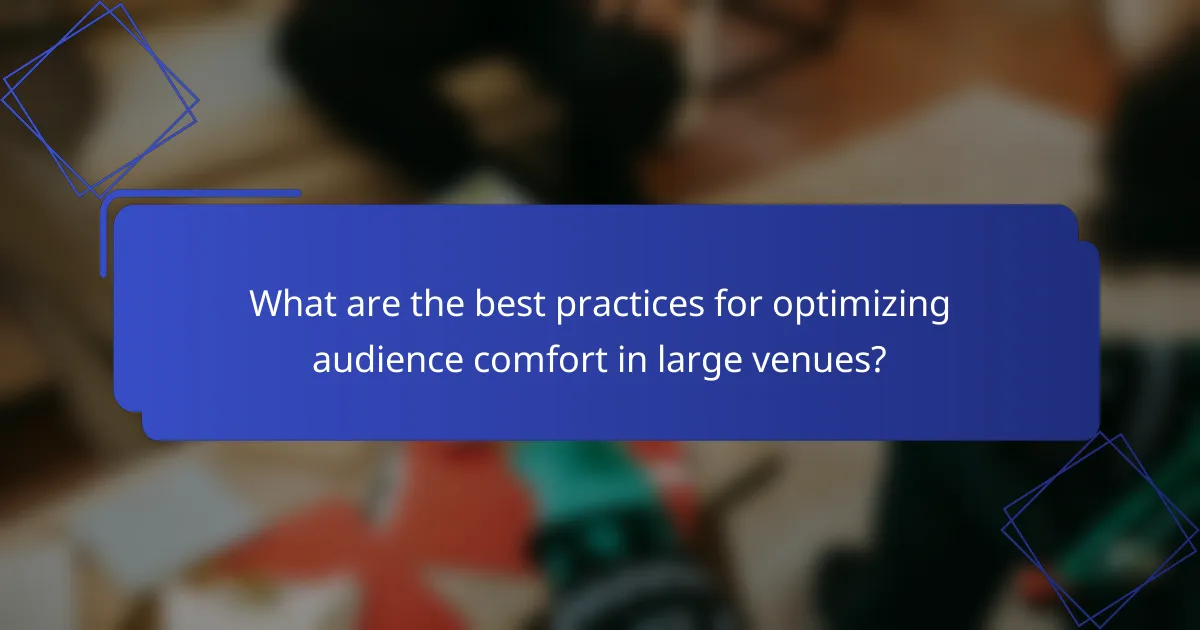
What are the best practices for optimizing audience comfort in large venues?
To optimize audience comfort in large venues, focus on effective seating arrangements, temperature control, and clear sightlines. Ensuring that attendees feel comfortable and engaged enhances their overall experience and encourages repeat attendance.
Effective crowd management strategies
Implementing effective crowd management strategies is crucial for maintaining comfort in large venues. Consider using designated entry and exit points to minimize congestion, and employ staff to guide attendees during peak times. Additionally, clear signage can help direct people efficiently, reducing confusion and wait times.
Utilizing technology, such as mobile apps for real-time updates on crowd density and wait times, can further enhance the experience. Encourage attendees to arrive early to avoid last-minute rushes, which can lead to discomfort and frustration.
Accessibility features
Incorporating accessibility features is essential for ensuring that all attendees can enjoy the venue comfortably. This includes providing wheelchair ramps, accessible seating options, and restrooms that accommodate individuals with disabilities. Compliance with local regulations, such as the Americans with Disabilities Act (ADA) in the U.S., is necessary to create an inclusive environment.
Additionally, consider offering assistive listening devices and clear visual aids for presentations. Training staff to assist guests with special needs can also enhance the overall experience and ensure that everyone feels welcome and comfortable in the venue.
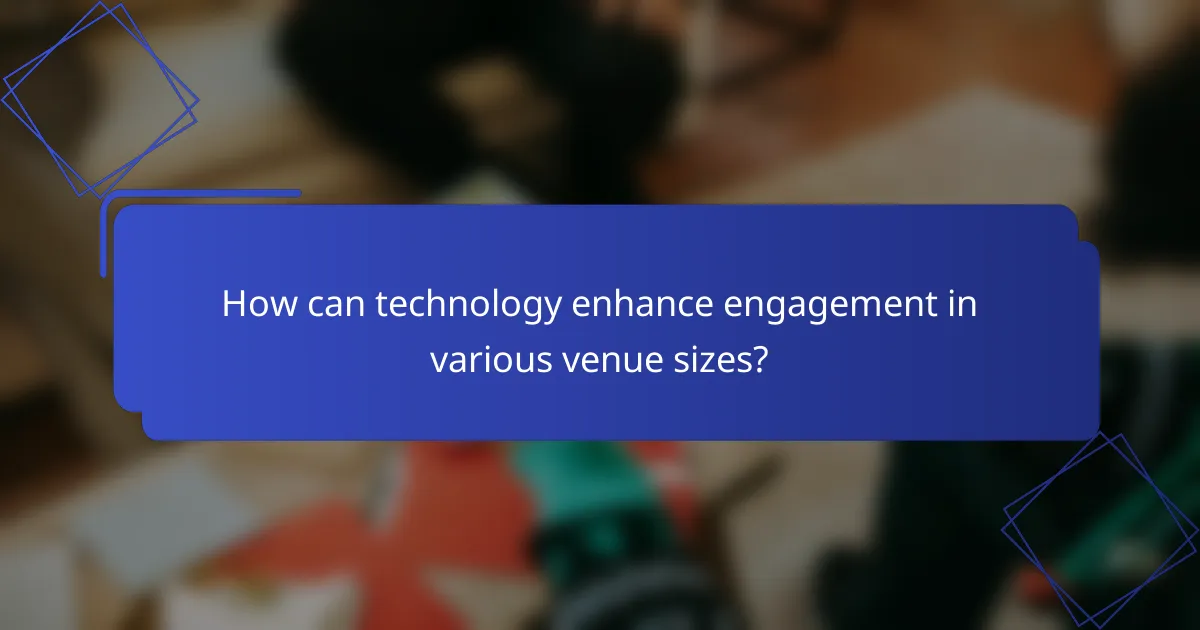
How can technology enhance engagement in various venue sizes?
Technology can significantly boost audience engagement in venues of all sizes by providing interactive experiences and seamless communication. Utilizing the right tools can create a more immersive environment, ensuring that attendees feel connected and involved, regardless of the venue’s capacity.
Use of interactive displays
Interactive displays can transform the audience experience by allowing attendees to engage directly with content. These displays can include touchscreens, augmented reality, or digital signage that provides real-time information and feedback. For example, in a medium-sized venue, a large touchscreen can facilitate audience polls or Q&A sessions, making participation easy and immediate.
When implementing interactive displays, consider the venue layout and sightlines. Ensure that screens are visible from all seating areas, and choose technology that is user-friendly to avoid confusion. A well-placed display can enhance engagement by drawing attention and encouraging interaction.
Mobile app integration
Integrating a mobile app can enhance audience engagement by providing a platform for communication, information sharing, and personalized experiences. Attendees can access schedules, speaker bios, and venue maps directly from their smartphones, which is especially useful in larger venues where navigation may be challenging.
To maximize the benefits of mobile app integration, ensure the app is intuitive and offers features like live updates, networking opportunities, and feedback options. Encourage attendees to download the app before the event to familiarize themselves with its functionalities. This proactive approach can lead to higher engagement levels and a more satisfying experience overall.
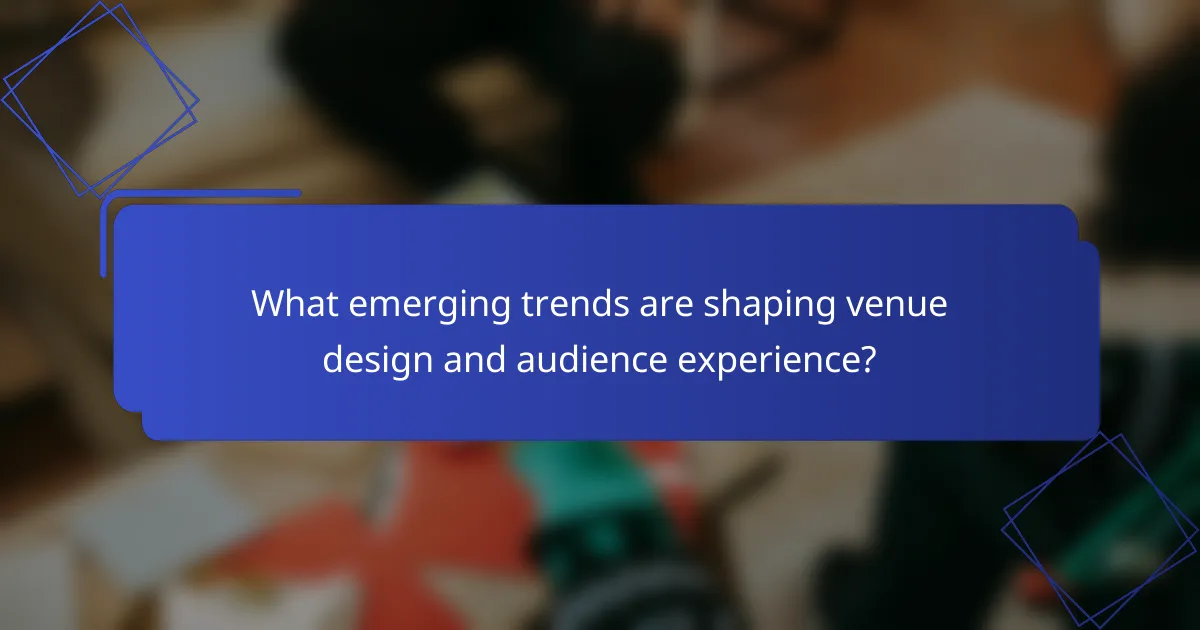
What emerging trends are shaping venue design and audience experience?
Emerging trends in venue design focus on enhancing audience engagement, comfort, and sightlines. Innovations include flexible seating arrangements, advanced technology integration, and sustainable practices that prioritize both user experience and environmental responsibility.
Sustainable venue practices
Sustainable venue practices are becoming essential in modern design, emphasizing energy efficiency and minimal environmental impact. This includes using renewable energy sources, implementing waste reduction strategies, and selecting sustainable materials for construction and furnishings.
For instance, venues can incorporate solar panels, rainwater harvesting systems, and energy-efficient lighting to reduce their carbon footprint. Additionally, venues may adopt zero-waste policies, encouraging recycling and composting to manage waste effectively.
When planning a sustainable venue, consider the lifecycle of materials and the long-term benefits of investing in green technologies. Engaging with local suppliers can also enhance sustainability while supporting the community. Avoid common pitfalls like overlooking maintenance costs of green technologies, which can impact overall sustainability goals.

